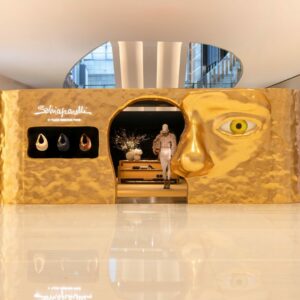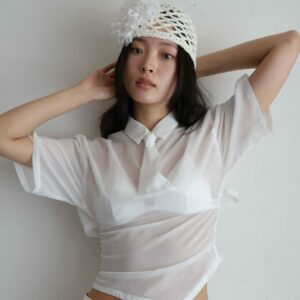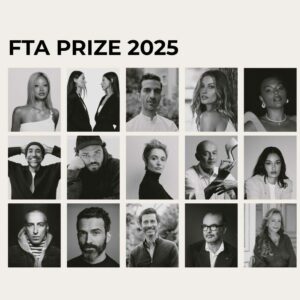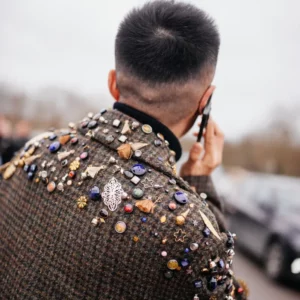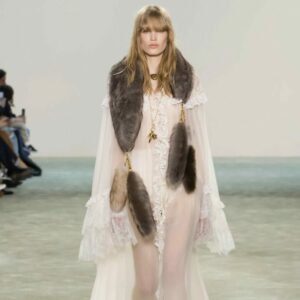For London-based Syrian fashion designer Zeina Issa, fashion is more than clothing, it is a medium for representing identity. Currently pursuing her Master’s at Central Saint Martins, she transforms heritage and lived experiences into pieces that defy convention. Her fascination with design began in childhood and crystallized in seventh grade after discovering Project Runway, when she realized fashion could be more than a passion, it could be a life path. Having grown up away from Syria, she once distanced herself from her heritage, but in recent years her practice has evolved into an exploration of faith, culture, and the nuances of Arab and Muslim womanhood.

How did you first get into fashion, and what drew you to pursue it seriously as a career?
Fashion has always been part of me. As a child, I used clothes as a way of understanding myself, but the real turning point came in seventh grade when I discovered Project Runway. Growing up in Abu Dhabi in the 2010s, I hadn’t realized fashion could even be a career. From that moment, I knew it was what I wanted to pursue, and after years of convincing my parents, I eventually went on to study design at university.
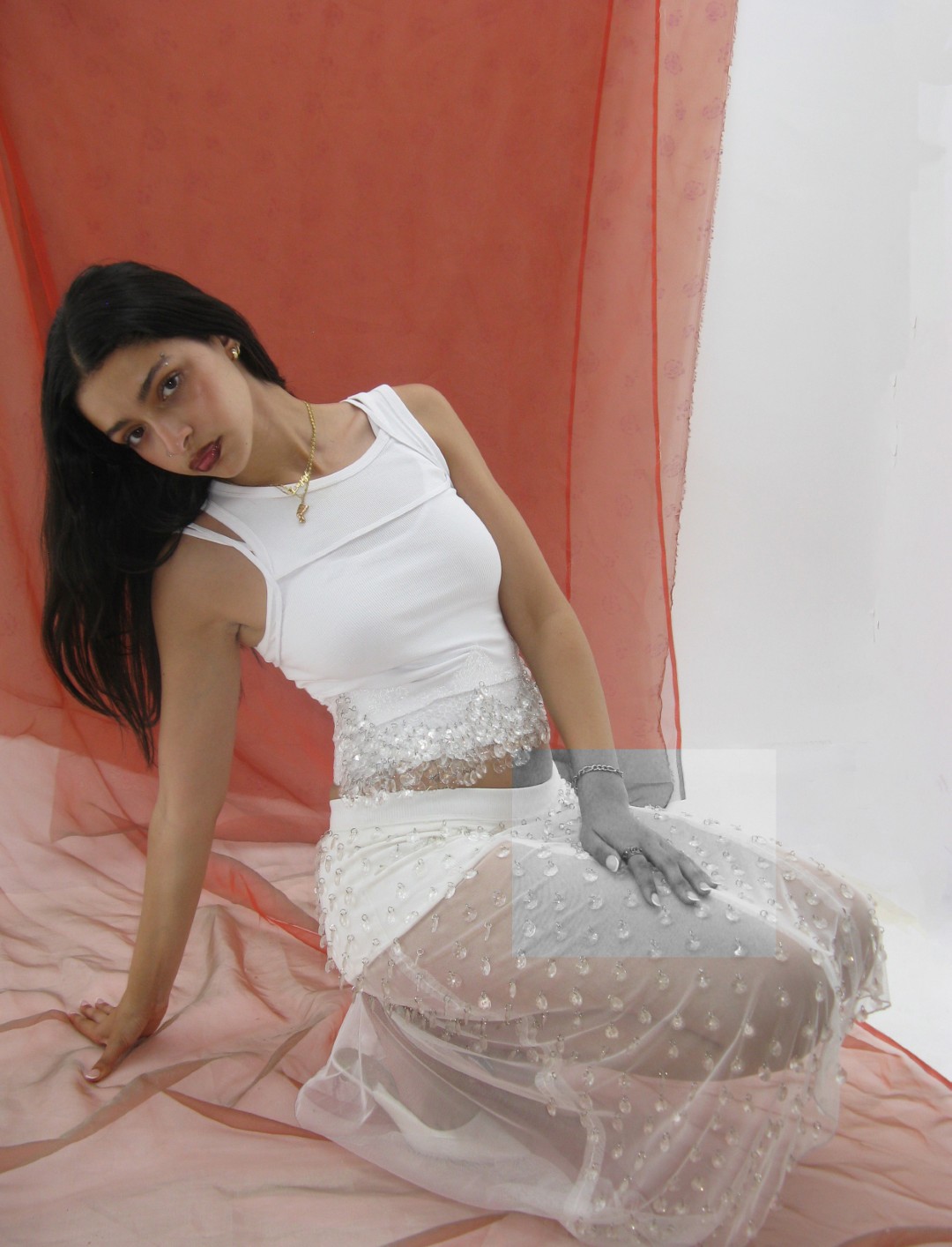
How has your Syrian heritage shaped the way you approach fashion and design?
That’s a hard question. I’ve been away from Syria for over 15 years, ever since the war began, and because of that, I felt disconnected from that part of myself. In my earlier work, I barely confronted it, but in recent years, I’ve felt a strong desire to reference and reinterpret my heritage within my practice. My upcoming final Master’s collection is where I’m definitely exploring this more, approaching it organically in a way that feels authentic to who I am. With so few Syrian designers in the industry, part of my motivation is to create the representation I once longed to see when I was younger.

What personal experiences most influence the stories you tell through your garments?
My work is shaped by my experiences as a Muslim and Arab woman. I often explore my relationship with faith and cultural identity, as well as how personal identity is shaped at the intersection of the two. I am interested in what it means to navigate openness or restriction in these spaces, and how women like me position ourselves within them. These are realities many Arab Muslim women experience but do not often speak about, sometimes because they are taboo. My garments materialize those emotions and contradictions, capturing what it feels like to exist between and outside of imposed perceptions.
Can you walk us through your design process and how you start a project?
My process begins with intention, thinking about what I want to say, who I’m speaking to, and why it matters. I start with the personas I’m designing for, and they guide all my research through historical garments, art, films, or personal archives. Styling is a critical step, where I work with pieces from my wardrobe while keeping my research in mind, intersecting historical or past references with something distinctly my own. Simultaneously, I experiment with fabrics, prints, and unexpected materials, guided by my research and personal lens. Finally, through collaging, which is my favourite part, I develop design ideas.

You use unconventional materials in your designs. What role does experimentation play in your process, and how do you choose which materials to work with?
Designing the textile is my favourite part of making garments! I constantly push myself to experiment with new materials, approaching each choice meticulously, as it defines the very essence of the piece. Some of my previous projects include using wooden beads to reflect heaviness, repurposing a wedding dress into a bridal jersey, and even experimenting with grass, chandelier crystals, and 3D printing.
How do you balance traditional craft with contemporary aesthetics in your work?
I love traditional craft. Handmade work has such depth and presence. To bring it into a contemporary space, I often combine it with unexpected materials or reinterpret it through modern silhouettes.
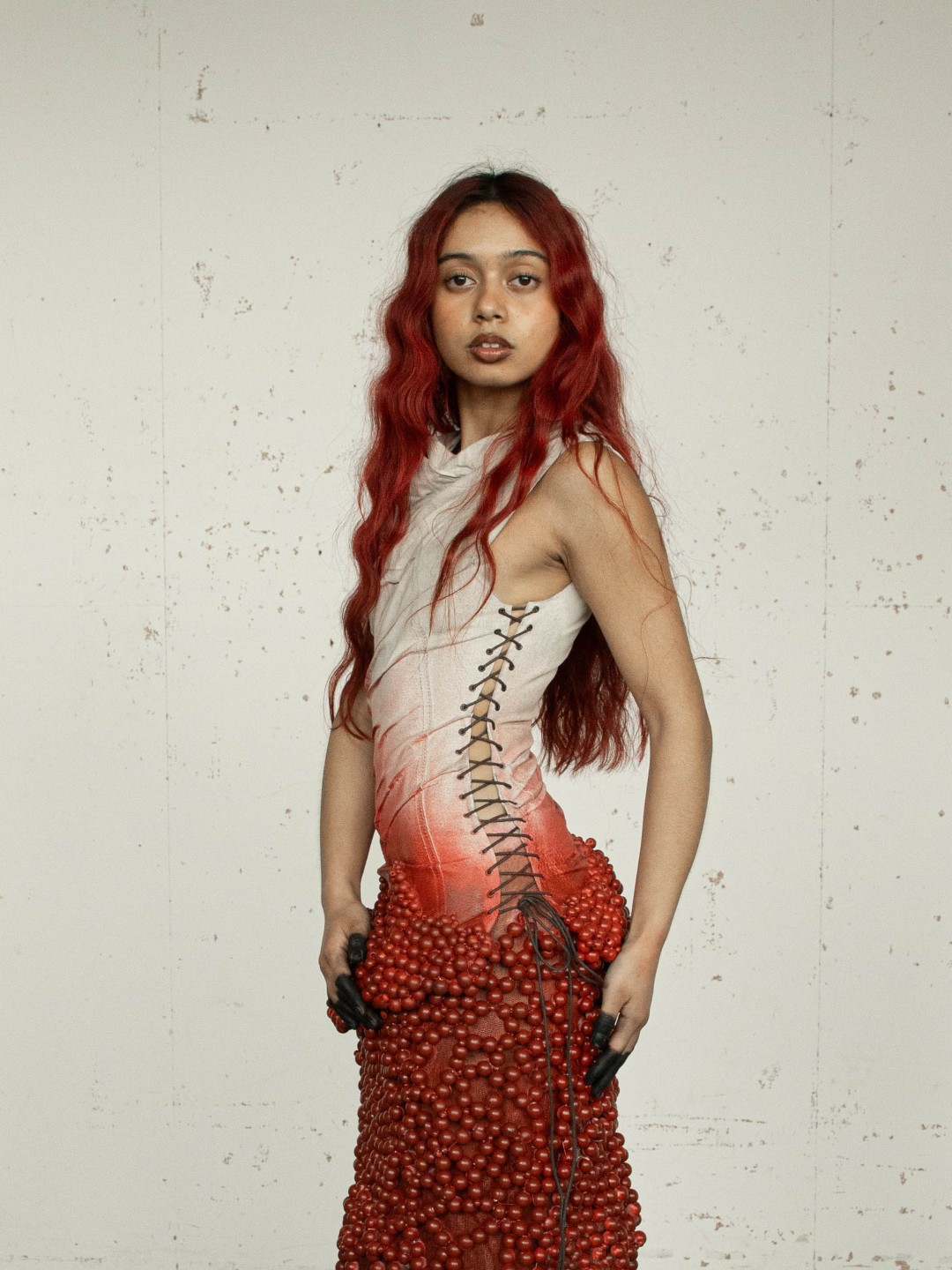
What is one piece in your own wardrobe you could never part with, and why?
100% my belly dancing belts! I’ve been collecting them for years and now have 25 pieces, all second-hand, I might add. At university, the jingling of my belts lets everyone know I’m in the studio. They’ve become almost like a sense of home, elevating any outfit, carrying Arab identity, and always reminding me who I am.
For more stories of fashion from around the region and beyond, visit our dedicated archives and follow us on Instagram.





